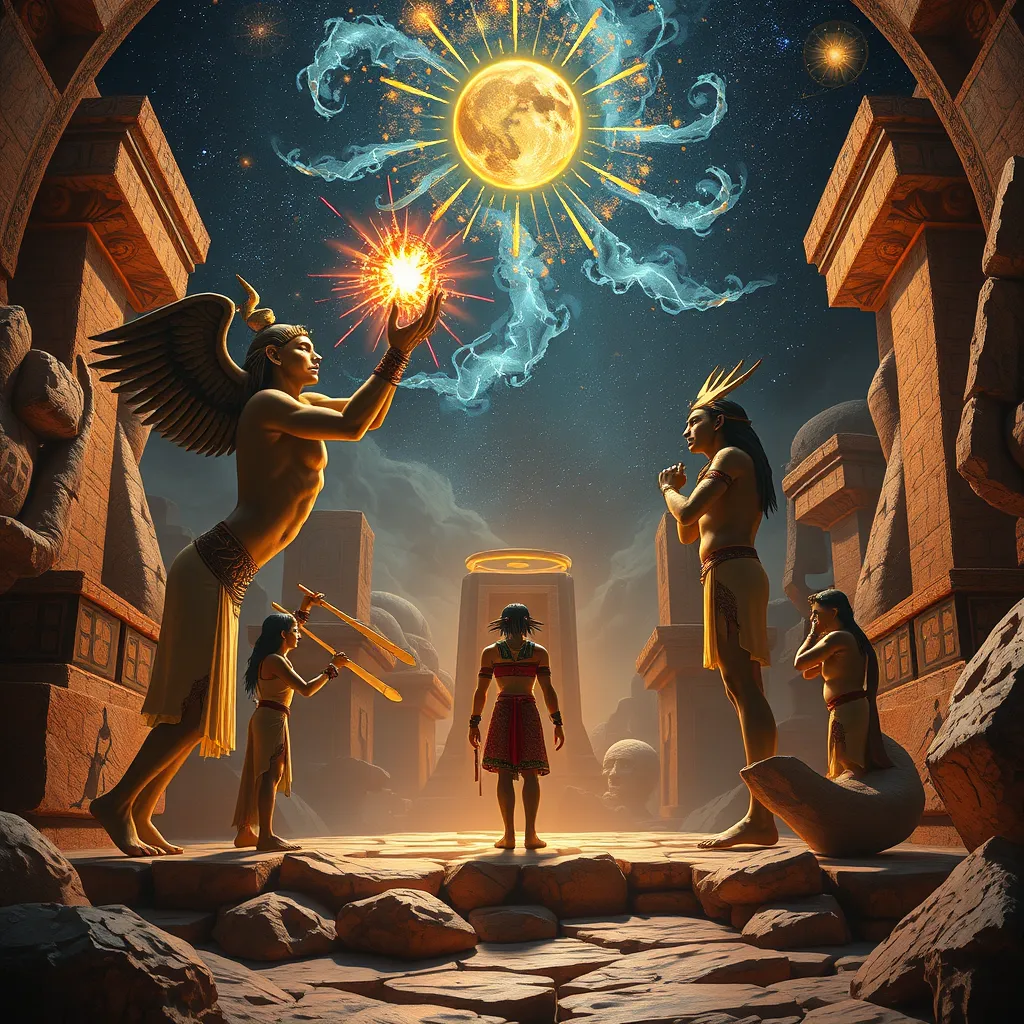The Creation of the World: Atum’s Self-Creation and the Birth of the Gods and the Universe
I. Introduction
Creation myths have fascinated humanity across cultures and eras, providing insight into the beliefs and values of different societies. Each culture presents its own unique narrative about how the universe and life began, reflecting the human quest for understanding existence. Among these myths, the Egyptian creation story stands out, particularly due to the prominence of Atum.
Atum, a central figure in Egyptian mythology, is revered as the god of creation and is often depicted as the first deity to emerge at the beginning of time. His significance extends beyond mere creation; he embodies the principles of self-creation and the genesis of the gods and the universe. This article aims to explore Atum’s self-creation, the birth of other gods, and the overarching impact on Egyptian cosmology.
II. The Concept of Self-Creation in Egyptian Mythology
Self-creation is a powerful concept in Egyptian mythology, representing the ability of a deity to bring forth existence without external assistance. This notion signifies not just the act of creating but also the self-sufficiency and autonomy of divine beings.
Atum is regarded as a primordial deity, representing the original source of all that exists. His self-creation is not only a narrative of origin but also a philosophical reflection on existence itself. The implications of self-creation challenge conventional ideas about creation by emphasizing the role of intention and will in the act of bringing forth life and order from chaos.
III. Atum’s Emergence from the Primeval Waters
Before the creation of the world, there existed a vast expanse of chaos known as Nun. This primordial waterscape was devoid of life and structure, a dark and formless abyss. It is from these depths that Atum emerged, marking the beginning of creation.
The moment of Atum’s emergence is a pivotal point in Egyptian mythology. He rose from Nun, symbolizing the transition from chaos to order. The primeval waters represent not only the chaos before creation but also the potential for life and the source of all existence. In many creation myths, such waters are often a symbol of fertility and the womb from which life springs.
IV. The Process of Atum’s Self-Creation
Atum’s first act of creation involved speaking the world into existence, a powerful demonstration of the significance of words and names in Egyptian culture. By uttering the names of things, he brought them to life, illustrating the belief that naming is an integral part of creation.
- The act of naming reflected a deeper understanding of reality.
- Atum’s ability to create through speech highlights the connection between language and existence.
Moreover, Atum embodies both masculine and feminine aspects, often referred to as “the one who is all.” This duality signifies completeness, reinforcing the idea that creation is not bound by gender but is a holistic process.
V. The Birth of the First Gods
From himself, Atum created the first deities, Shu and Tefnut, who represent air and moisture, respectively. Their birth marked the beginning of a new phase in creation, where the universe began to take shape and function.
The role of these first gods was crucial in the ongoing process of creation:
- Shu separated the sky from the earth.
- Tefnut provided the moisture necessary for life.
The familial relationships among the deities established a divine hierarchy and interconnectedness, laying the foundation for the rich tapestry of Egyptian mythology.
VI. The Creation of the Physical Universe
Atum’s creation narrative continues with the separation of the earth (Geb) and sky (Nut), a significant event that established order from the primordial chaos. This separation allowed for the creation of space where life could flourish, demonstrating the Egyptians’ understanding of cosmology.
The significance of the cosmos in Egyptian belief cannot be overstated. The heavens and the earth were seen as vital components of existence, with each deity playing a role in maintaining the balance of the universe. Rituals and offerings were often directed towards these deities to ensure the continued harmony of the world.
VII. The Impact of Atum’s Creation on Egyptian Cosmology
Atum holds a prominent position within the Egyptian pantheon, regarded as the creator god from whom all life springs. His influence extends beyond creation; Atum represents the cyclical nature of existence, with death and rebirth being central themes in Egyptian thought.
The relationship between Atum and other gods is complex and multifaceted. He is often associated with Ra, the sun god, and the two are sometimes conflated in mythology. Festivals and rituals honoring Atum, such as the “Wepet-Renpet” (the opening of the year), celebrate his role in creation and the natural cycles of life.
VIII. Conclusion
Atum’s significance in the creation myth encapsulates the essence of Egyptian cosmology and the fundamental questions of existence. His self-creation narrative reflects the profound understanding of life, order, and the universe that ancient Egyptians possessed.
The legacy of Atum’s creation story endures in Egyptian culture, influencing religious practices, art, and literature throughout history. Moreover, the universality of creation narratives across civilizations highlights the shared human experience of seeking meaning and understanding in the origins of life and existence.




